When editing food photos, it's easy to make mistakes that actually make the dish look less appetizing.
What ruin the photo food?
When editing food photos, it's easy to make mistakes that actually make the dish look less appetizing. Here are some of the biggest mistakes to pay attention:
- Too much color saturation. Cranking up the color intensity might seem like an easy way to make food pop, but it often looks artificial and overdone. Go easy on the color sliders and aim for a natural vibes.
- Harsh lighting. Spotlights and flash can create an unflattering bright glare on food. Soft, diffused lighting is much more natural and appealing.
- Bad cropping. Cropping too tightly around the outer edges of the dish or cutting off key elements like garnishes makes a photo feel cramped. Give the subject some breathing room by pulling back to include some negative space around and above the plate.
- Heavy vignetting. Adding a dark vignette around the edges of a photo draws attention inward, but too much vignetting makes a food photo look gloomy. Use a light touch or skip the vignette altogether.
- Over-sharpening. While a little sharpening can help bring out details, overdoing it creates harsh lines and an artificial look. Sharpen photos subtly and selectively to keep food looking natural and appealing.
That's look so tasty
Natural light, subtle color adjustments and minimal filtering are all you need to make your edits look good enough to eat! Focus on bringing out the vibrant colors and textures of the actual dish.
- For color correction, tweak the brightness and saturation to make the image look as natural as possible.
- Lower the brightness a bit and adjust the saturation slider to find the right balance. You want vivid but believable colors.
- White balance also impacts how realistic the image appears. Adjust the white balance to neutralize the temperature and remove any color casts.
But keep effects minimal - you want to enhance the dish, not transform it into something unrecognizable!
Background and cropping
Cropping and composition are two of the most important techniques to make your dish photos pop.
Cropping allows you to isolate your dish by removing unnecessary background details. Think of your dish as the main subject or focal point.
Don’t be afraid of empty space in your photo. Having some negative space around your dish gives it room to breathe and helps highlight it as the focus. Too much clutter or a busy background competes for attention and makes your photo feel cramped.
Enjoy reading and have a good photo editing!
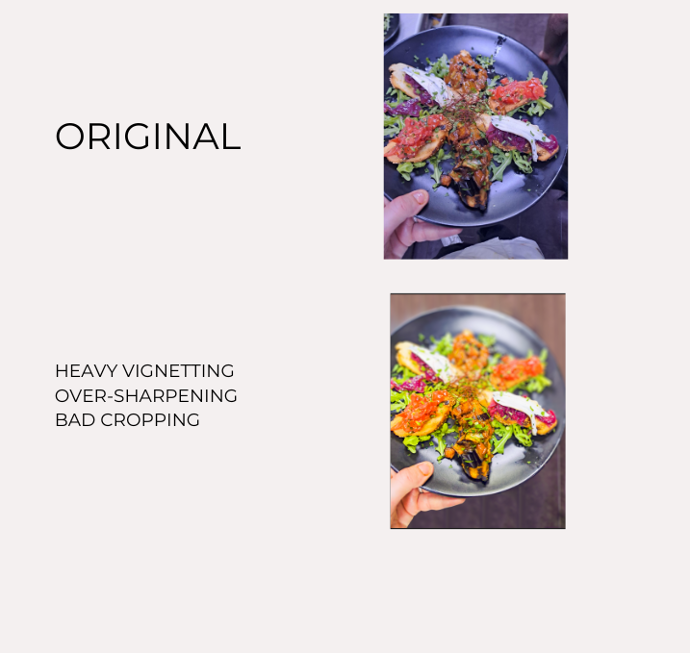
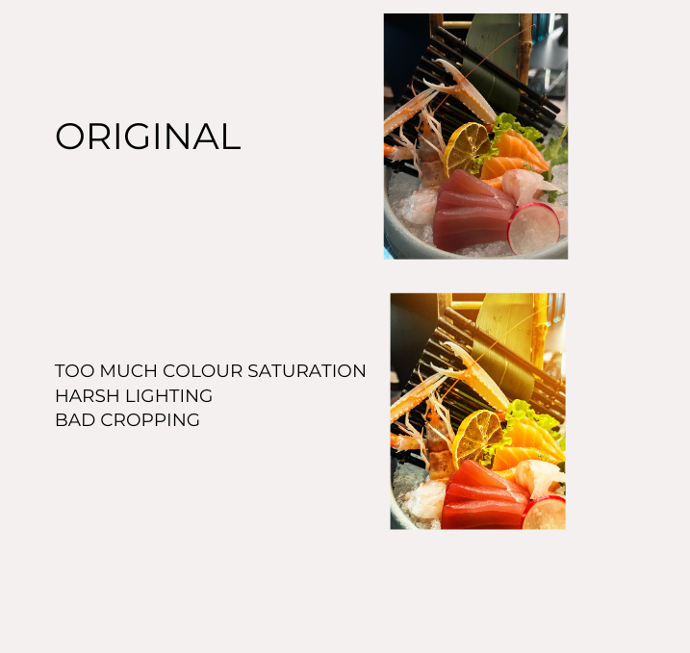
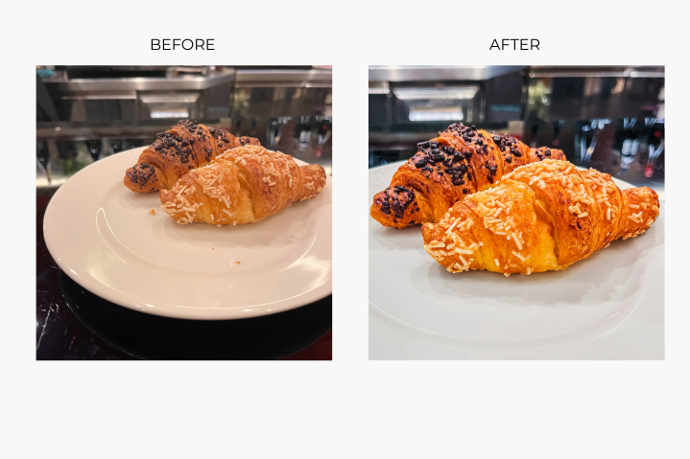
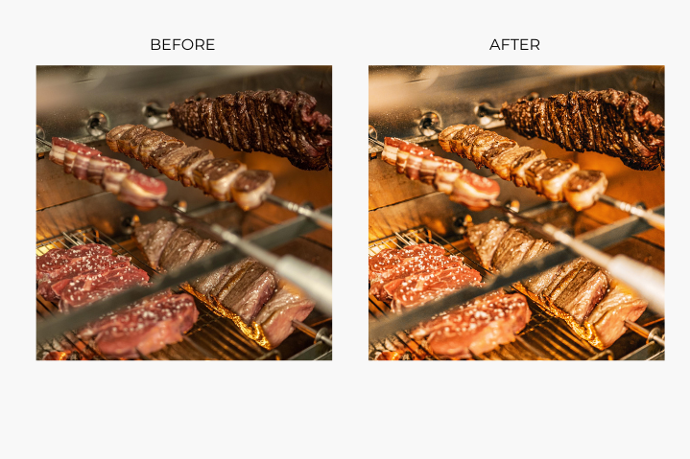
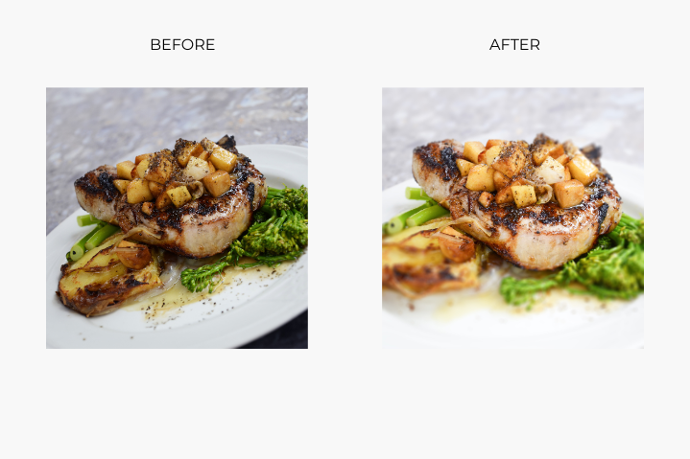
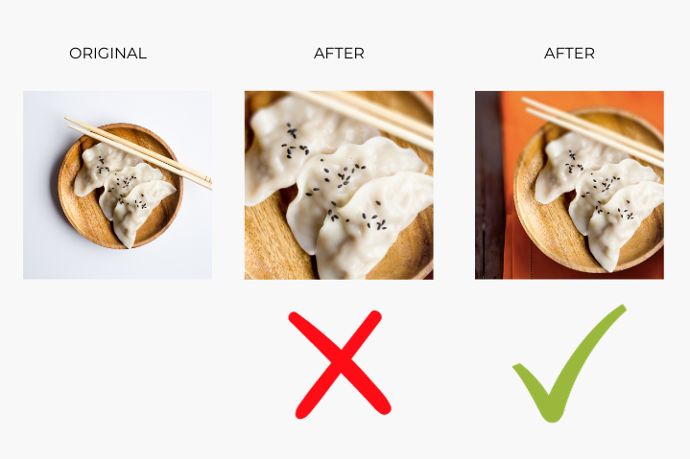
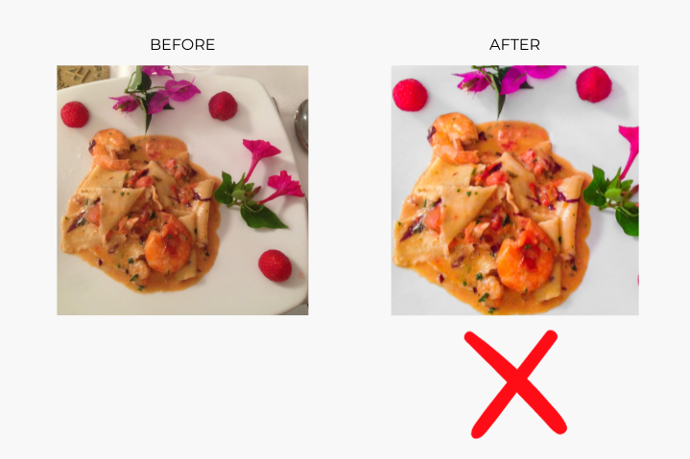
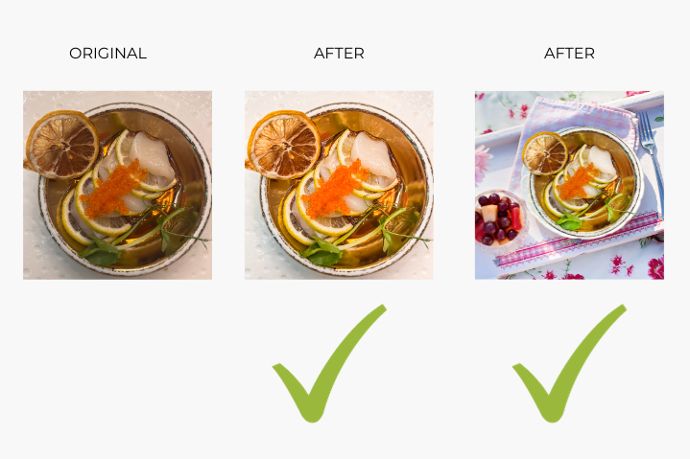
Enhancing the Dish